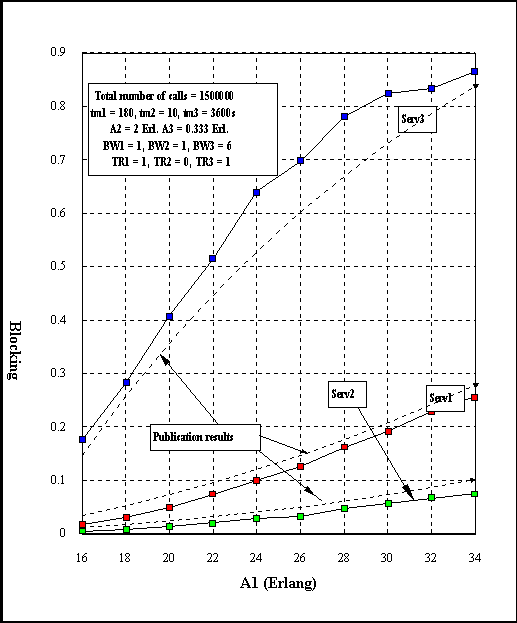
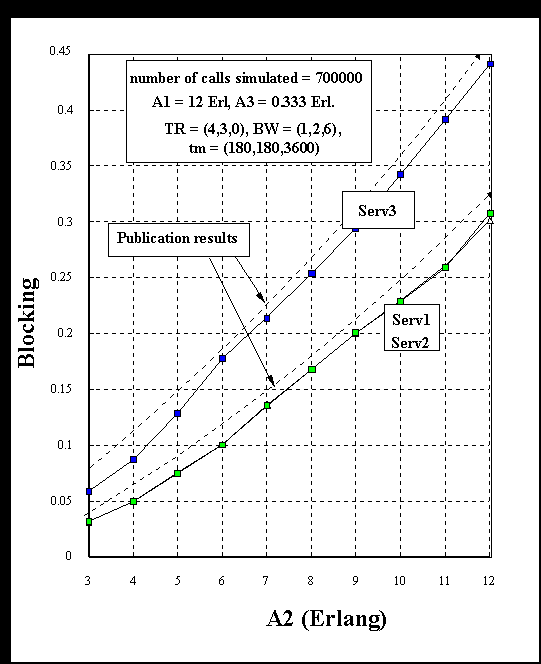 Fig. 1 Comparison of simulation results with the publication results
Fig. 1 Comparison of simulation results with the publication resultsTraffic Performance of Multi-Slot Calls in Circuit Switching Environment
Erke, Tapio J. & Shakya, Rabindra Man
Telecommunications Program, School of Advanced Technologies, Asian Institute of Technology
GPO Box 2754, Bangkok 10501, Thailand
Tel: (66-2) 524-5732, Fax: 524-5730, Internet: erke@ait.ac.th or shakya@ait.ac.th
Abstract: Recent developments in communications have led to much interest in systems where traffic of widely differing characteristics is integrated together. This paper presents an analysis of blocking and trunk utilization when mixture of different multi-slot traffic streams are offered to a digital switching system. We used simulation method to obtain the blocking probabilities for different services emphasizing on the realistic traffic profile. The results of simulations have been compared with the analytical calculation for simple models for verification. The simulation model can be used in the analysis of complex ISDN system and planning integrated systems.
I. Introduction:
With the advent of ISDN in the digital exchanges, a wide variety of calls such as voice, data and video with heterogeneous types of traffic is required to be served by the exchange. Integrating services of diversified features (e.g. different holding time, different bandwidth etc.) on to common shared resources may have undesirable affects on the performance of individual services.
With the rapid evolution of telecommunications echnologies, teletraffic topics such as bandwidth allocation and control, characterization and modeling of multiservice traffic with variable bit rate, the quality of services in multirate environment, and its impact on network costs and dimensioning, are very important.
As already known, there are problems such as imbalance of blocking among traffic, and decrease of link utilization caused by the effect of different modularities of the number of channels (link) required by calls. Telephone companies have been motivated to increase the flexibility of their network because of commercial competitive pressure, the need for new services and increasing demand for existing communication services of all kinds (e.g. voice, data, video etc.). The future exchange should be able to support the wide variety of traffic characteristics, diverse service and performance requirements.
In the existing telephone network, every time a call is made, the bandwidth requirement is known (e.g. 3kHz or 64kbps). Hence a simple bandwidth allocation strategy is used in existing telephone networks. This is to allocate bandwidth in the network from the origination to destination for entire duration of call. If the call cannot be accepted, it is said to be blocked, and it either can be made to wait until path becomes available or it can be cleared.
In the new service feature, services can be grouped into classes according to their traffic parameters feature. As the busy hour of different services are unlikely to coincide with each other, bandwidth allocation strategies must be able to cope with different proportion of traffic classes. These bandwidth allocation strategies are required to provide fairness in bandwidth allocation among different traffic classes.
II. Traffic Modeling:
The planning and engineering of an advanced exchange will require consideration of the traffic characterization of the ISDN service, subscribers with multiple levels of activity, speeds, information volumes and holding times. Since many of the services may be carried by, either packet switching or circuit switching modes, a unified characterization for a multiservice environment is the starting point for traffic definition at the user and network interfaces. The non-voice services require a different and more complex characterization than of standard telephony. The knowledge of the call composition is a primary environment to derive the demands and resource utilization of the ISDN architecture.
A unit "call" is treated as a basic reference with aggregation of the associated components, such as messages, packets, blocks of information, bits etc. All the services and traffic classes are grouped to simplify the treatment. The concept of "Integrated Call Attempts" uniquely defined, as the weighted average of each traffic class demand for the convergent multi-service flows with their corresponding penetrations.
The ISDN which offer various telecommunication services such as voice, data and video serve heterogeneous types of traffic with different bit rates. In circuit switched type network, it is advantageous to employ multi-slot call handling capability which allows many types of traffic to share common trunk groups flexibly.
As already known, there are problems such as imbalance of blocking among different services and decrease of trunk utilization caused by the effects of different number of trunks which are required by calls.
Following is the particular example model used by the simulation software developed. Traffic performance with interaction of different bandwidth services in accessing commonly shared trunk group is analyzed using the model.
The traffic type i is characterized by a call arrival rate l i in call/time unit (TU), mean holding time tmi TU (i.e. the expected duration of connection), and a bandwidth b i in basic bandwidth unit (for e.g. number of time slots in time multiple switching). Call arrivals are assumed Poisson and holding times exponentially distributed, though other distribution can also be tested with this simulation software. The basic assumption regarding resource allocation (Bandwidth allocation) at connection level is trunk reservation (TR). So, each traffic type is also characterized by a trunk reservation parameters TRi. For complete sharing (CS) scheme all the TRi values are set to zero.
The three services have been considered as fairly representative service covering the range between services in narrowband region. Service 1,2 and 3 are characterized by offered traffic Ai = l itmi, in Erlangs. To account for the different bandwidth demands, we define the service i traffic load as Aib i. The total traffic load generated is related to the traffic load of all services, according to following equation.
A = A1b 1+A2b 2+A3b 3
We treat trunk group model which carries two types of calls with different bit rates (number of slots 1 and 10) and trunk reservation (TR) which regulates the connections of single slot (i.e TR for m-slot is always zero). The following points are assumed in the model
(1)Trunk group consists of N-trunks
(2)Both single slot calls (type 1) and m-slot calls (type 2) arrive as independent Poisson inputs. l 1 and l 2 denotes the arrival rates. The holding times of the two types of calls are exponentially distributed with means tm1 and tm2.
A = l 1tm1 + l 2tm2
R2 = ml 2tm2/A
i.e. R2 is portion of m-slot call present in the traffic mix. Trunk utilzation (U) is calculated by dividing carried traffic by number of trunks
i.e.
U = Ac/N
This model is used to verify the results obtained in the publications. The comparison of the results are presented in figure. As we have already stated, the assumption of Poisson traffic in real case is no longer valid, since the number of sources generating traffic is limited. The assumption of exponential holding time too is not a valid one because of repeated call. The users reaction to failed call generates repeated call in a short interval affecting the arrival patterns. In addition to the origination of traffic, processing time is also required during the other phase of a call e.g. digit translation, routing. Since the time required for processing is small comparatively, their effects are neglected in the analytical calculations. But their effect at overload situation is pronounced causing sustainable congestion. It is difficult to analyze them with mathematical model which comprises relationship between all the parameters. That is why we choose simulation technique to analyze them with finite sources, repeated attempt and time varying traffic model. The results are presented comparing with Poisson traffic.
The model consists of fixed number of subscribers which can be extended to infinity for ideal case. It consists of fresh traffic arrival rate (l I), repetition probability, failure probability, repetition intervals, users reaction to the call, etc. All these factors which are neglected in the analytical calculation gives significant effect on the network performances.

 Fig. 1 Comparison of simulation results with the publication results
Fig. 1 Comparison of simulation results with the publication results
III. Result summary:
The simulation of multislot traffic with various combinations of traffic mix shows that
(1) Smaller the R2 (portion of type 2 traffic), larger the overall trunk utilization. But the variation is very small. Hence it shows that mixing two services with different bandwidth does not affect much on the overall utilization of trunk though it affects on the individual services.
-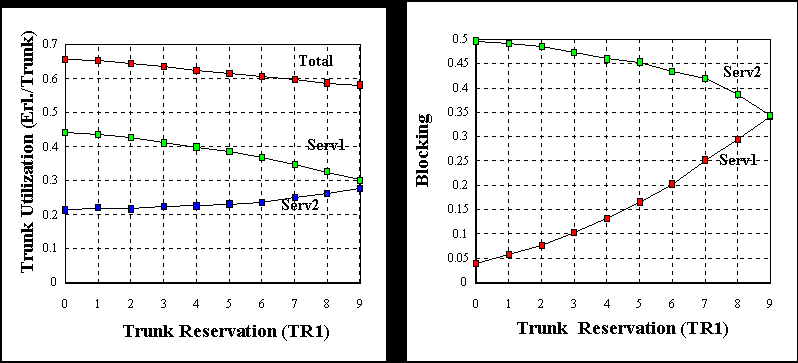
Fig. 2 Trunk utilization and blocking performances with respect to trunk reservation parameters
-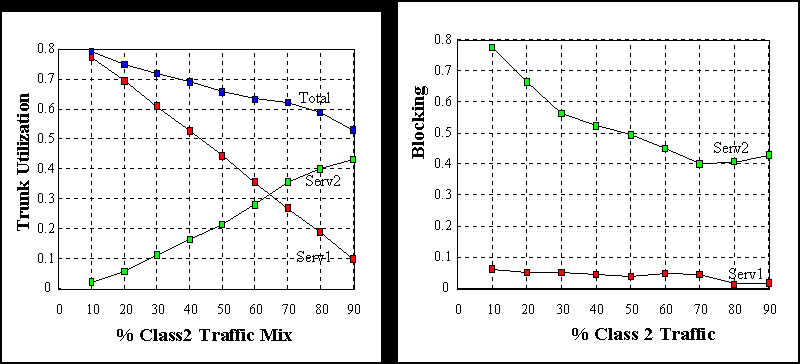
Fig. 3 Trunk utilization and blocking performances with increasing service 2 traffic mix
This figure shows the typical behavior of the blocking probabilities at such link. The relationship between the blocking probabilities of the call types is governed by the relative values of TRi + b i and TRj + b j. So, for example, when TRi + b i = TRj + b j the blocking probabilities are equal for both call types.
(2) Increasing offered load of one type affects other services. It was found that increasing lower bandwidth traffic affects more on higher service, i.e. the blocking of higher bandwidth services increases rapidly on increasing lower bandwidth service load.
(3) Increasing higher bandwidth load keeping lower bandwidth load constant has less effect on the blocking of lower bandwidth service provided the trunk reservation parameter is low.

Fig. 4 Effect of trunk reservation on blocking of different bandwidth traffic interaction
It can be generalized that, on increasing ith class traffic affects jth class traffic very rapidly such that
TRj +b j >= TRi+b i
(4) The blocking of all the three services (BW = 1,2 and 6) comes to be nearly equal when the trunk reservation parameters are (5,4,0). This shows that blocking depends upon TR + b . But it also depends upon holding time ratios. In our model we considered the holding times of all the services are equal. This makes us easy to investigate the effect of trunk reservation parameter and bandwidth on traffic performance.
(5) The blocking in the transient state is very high for service 3 (BW = 6). The increase in the arrival of single slot call makes high bandwidth service to block rapidly though it does not effect much on the lower bandwidth service.
(6) Trunk reservation (TR) scheme improves the performance of higher bandwidth traffic event in the transient case.
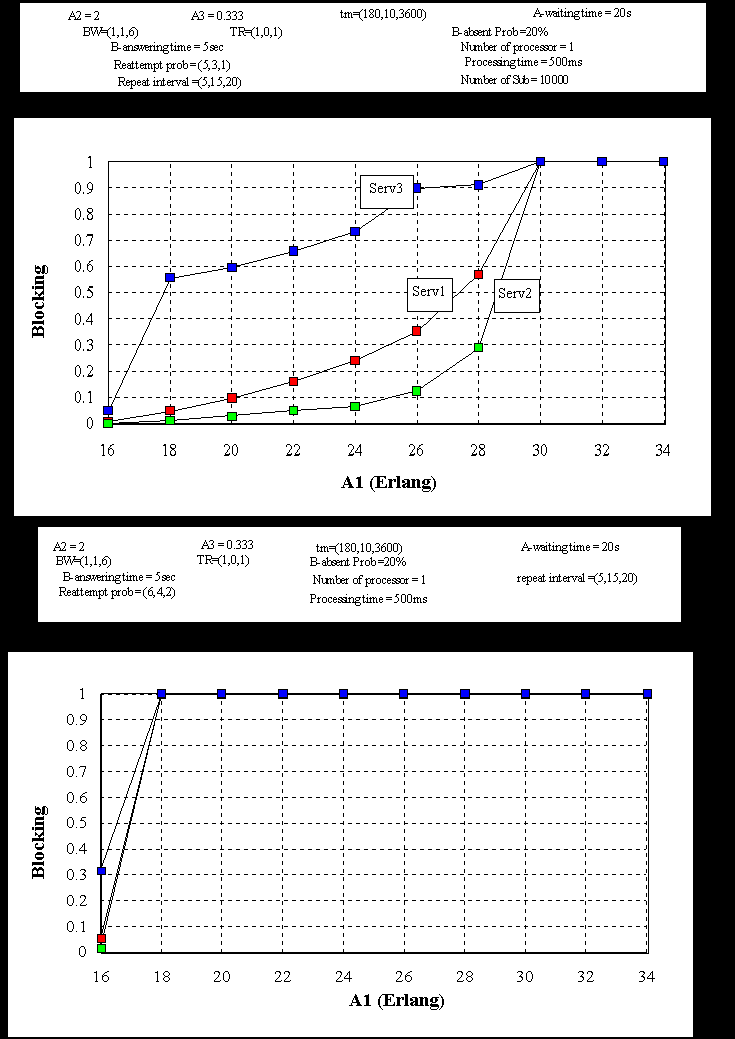
Fig. 5 Effect of repetition probability
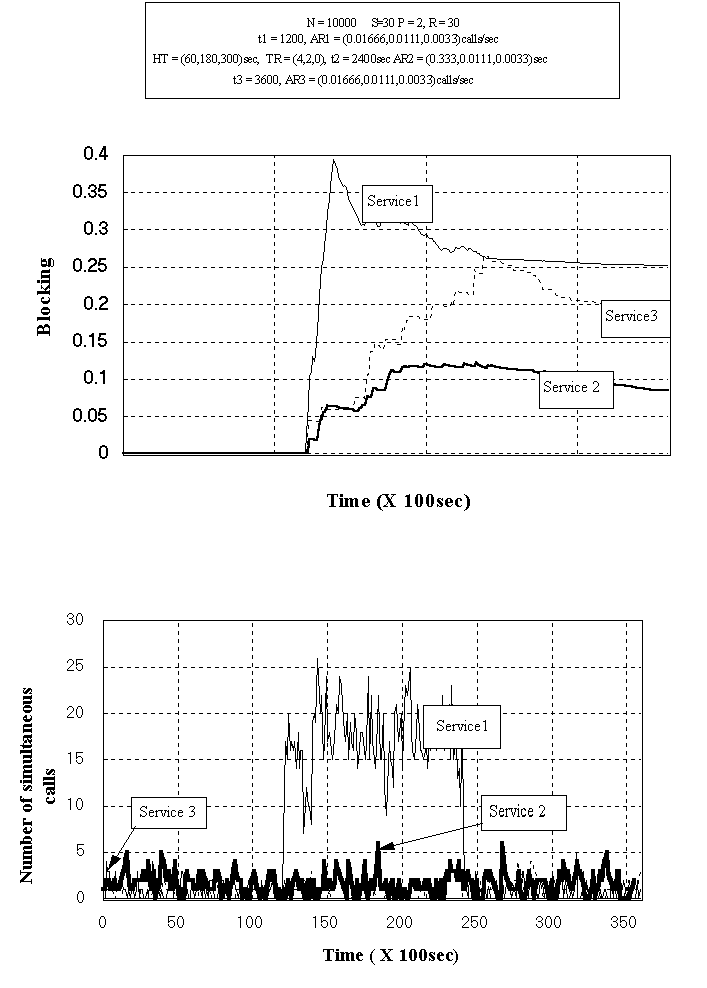
Fig. 6 Different service blocking under time varying traffic
(7) The figure shows the influence of switching system on the multiservice traffic at large processing delay (500ms). From the figure it is clear that the repetition probability also have big influence on the performance of the system at heavy load. The change of repeat probability from (50%,30%,10%) to (60%,40%,20%), completely blocked the system because of small time intervals between the successive attempts compared to the holding time.
Our results show that the simulation model described in this paper can be used in wide range of practical examples to give accurate estimates for the blocking probabilities in multiservice environment.
This simulation tool will ease in planning the integrated network. Blocking probability is one of the basic performance measures of telecommunication networks. Many difficulties concerning the analytical determination of blocking probabilities arise when one deals with a shared resource environment, where various users compete for service provided by limited number of facilities. The importance of this problem appears in the context of the analytical modelling of ISDN system which promise to accomodate different telecommunication services.
The most of the analytical methods developed to estimate blocking probabilities do not consider the realistic nature of traffic. We have developed simulation software to estimate the blocking probabilities and resource utilization of integrated communication system under realistic traffic. Various users reaction parameters and system parameters have been defined to make the model more realistic.
In order to improve the realistic nature of the traffic further, we need to consider multiple switching nodes model.
IV. References
1. Fiche, G., Corguille, D. & Palud, C. Traffic model for an ISDN switching system- ITC 12, Torino June 1988.
2. Grabowski, K. & Hagenhaul, L. Traffic model for ISDN with integrated packet switching, ITC 12, Torino, June 1988.
3. Habib, I.W. & Saadawi, T.N. Multimedia traffic characteristics in broadband networks, IEEE Communications magzine, July 1992.
4. Linderberger, K. Blocking for multislot heterogeneous traffic streams offered to trunk group with reservation, Traffic engineering for ISDN design and planning, ITC 12, 1988.
5. Oda, T. & Watanabe, Y. Optimal trunk reservation for group with multislot traffic streams, IEEE Transactions on Communications Vol. 38, No. 7 1990 pp 1078-84.
6. Takagi, T. & Sakita, Y. Analysis and loss probability equalized by trunk reservation for mixture of several bandwidth traffic, Teletraffic Science for new cost effective systems, Network & services, ITC-12, 1989
.